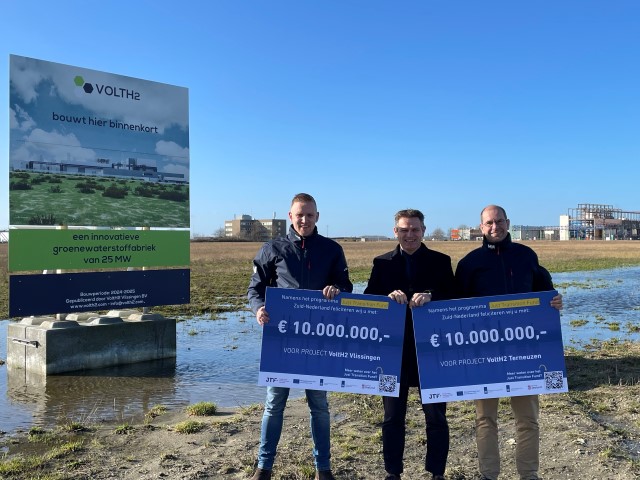The Netherlands – VoltH2 is set to receive a substantial subsidy of 20 million euros from the Just Transition Fund. This financial support is earmarked for constructing two green hydrogen production factories in Zeeland, a move poised to transform the region’s energy landscape.
The funds will specifically aid in realizing the critical 150 KV connections required for VoltH2’s hydrogen facilities in Terneuzen and Vlissingen. These factories are projected to collectively produce around 2 kilotons of green hydrogen annually starting in 2026, marking a pivotal shift from traditional hydrogen production methods.
VoltH2’s calculations indicate this transition will significantly reduce approximately 17 kilotons of CO2 emissions. Looking ahead to a second phase, commencing in 2028, the company plans to scale up operations from 25 MW to an impressive 125 MW. This expansion anticipates an annual production of around 10 kilotons of green hydrogen, substantially reducing 85 kilotons of CO2 emissions.
The industrial landscape in Zeeland currently relies heavily on nearly 600 kilotons of hydrogen annually, predominantly sourced from natural gas, a practice VoltH2 aims to revolutionize through its green hydrogen initiatives.
Overcoming challenges
The Just Transition Fund steps in to provide crucial support for the establishment of two 150 kV connections to substations. The intricacies of this infrastructure development include overcoming challenges in Vlissingen, where costs escalate due to a lengthy route to the high-voltage station, necessitating drilling to navigate dikes, roads, railways, and various other cables and pipelines. In Terneuzen, the hydrogen factory’s location on one side of the Ghent-Terneuzen canal and the existing high-voltage station on the other introduce their own set of challenges.
The groundwork for this project is already in motion, with basic design elements and concept designs underway. The next crucial steps involve the procurement of necessary components. VoltH2 plans to start work by the end of the current year, with a target completion date set for the end of 2025.





